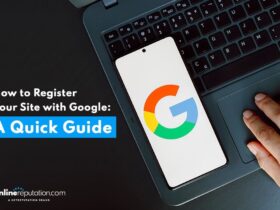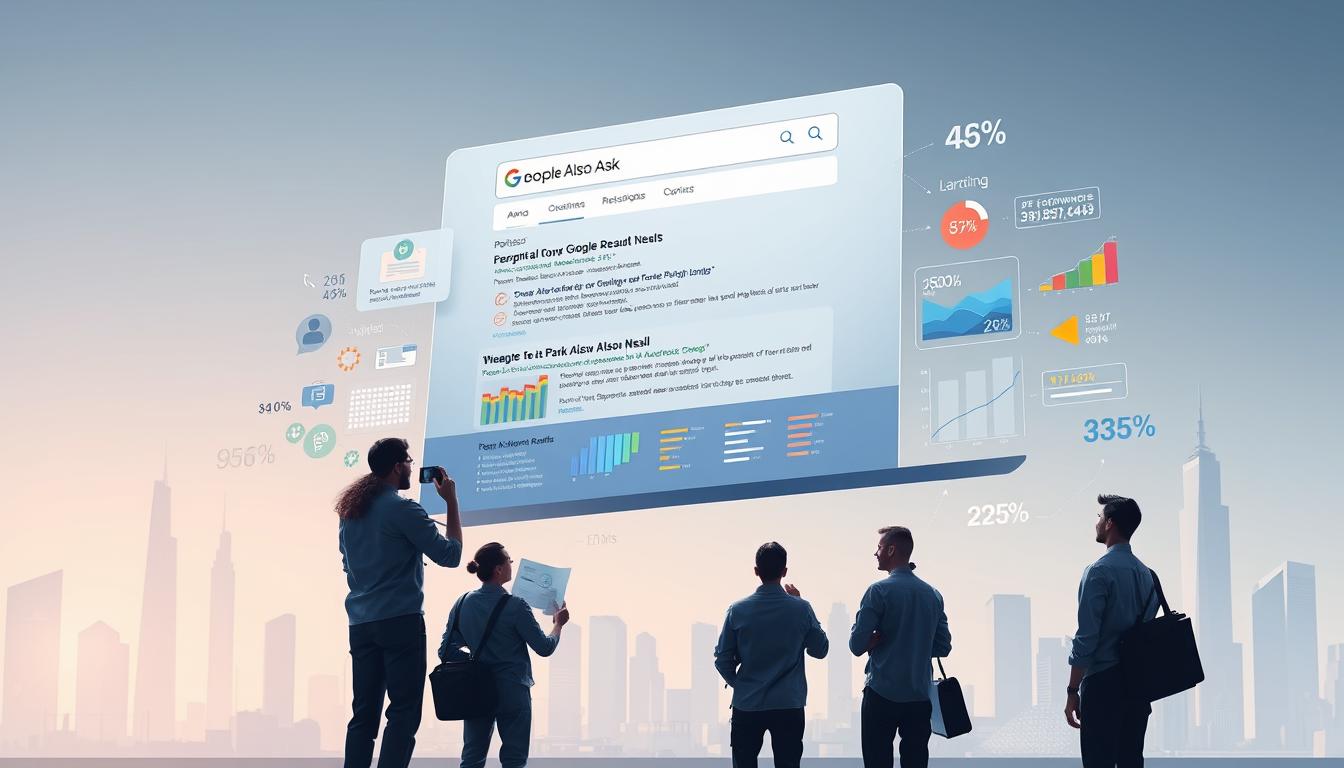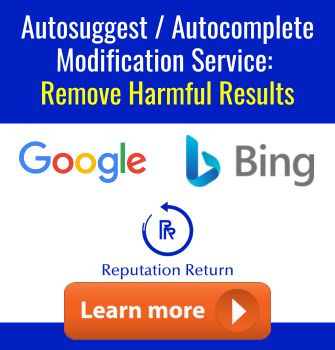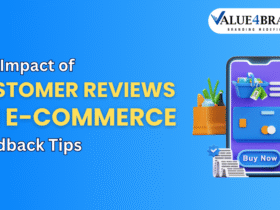Google’s People Also Ask (PAA) feature is a powerful tool that enhances search results by providing users with additional relevant questions and answers. This feature, appearing in approximately 43% of search engine results pages, offers a unique opportunity to boost your online visibility and reputation. At Reputation Return, we specialize in optimizing these PAA results to help businesses and individuals maintain a positive digital presence.
Understanding the ranking factors for PAA is crucial. Our data-driven approach, combined with industry expertise, helps you leverage these factors to your advantage. Whether it’s through schema markup, high-quality content, or strategic SEO practices, we ensure your brand stands out in the search results.
Reputation Return offers a free confidential consultation to assess your digital reputation needs. Our solutions are tailored to protect and enhance your online image, ensuring that the information appearing in PAA results accurately reflects your brand’s values and strengths. Don’t let negative PAA results impact your reputation—take control today.
Ready to optimize your PAA results? Learn more about how we can help you achieve a stronger online presence.
Introduction to People Also Ask and Its Impact on SEO
People Also Ask (PAA) is a dynamic feature by Google that displays related questions to a user’s search query. This feature has become a cornerstone in modern SEO strategies, offering insights into user intent and behavior.
What is People Also Ask (PAA)?
PAA appears in about 43% of search results, providing users with additional relevant questions and answers. It’s a powerful tool for enhancing online visibility and user engagement, as it often appears near the top of the search results page.
Evolution of the PAA Feature
| Year | Development | Impact |
|---|---|---|
| 2015 | Introduction of PAA as a simple Q&A feature. | Provided basic related questions to users. |
| 2020 | Expansion into a dynamic, interactive feature. | Enhanced user engagement with expandable questions. |
| 2023 | Integration with real-time data and user interactions. | Improved relevance and personalization in search results. |
“People Also Ask boxes are a goldmine for SEO insights, revealing exactly what users are curious about.” – HawkSEM
At Reputation Return, we leverage PAA insights to refine digital strategies, ensuring content aligns with user intent and search trends. This approach not only boosts visibility but also strengthens brand reputation.
Why Ranking in People Also Ask Drives Organic Traffic
Securing a spot in Google’s People Also Ask (PAA) section can significantly boost your website’s organic traffic. This feature, appearing in over 50% of search results, offers a prime opportunity to enhance visibility and engagement.
Enhanced Visibility and Click-Through Rates
Ranking in PAA increases your site’s visibility, making it more likely for users to click through to your content. Featured snippets, including PAA, capture a substantial share of clicks, often drawing attention away from traditional listings.
| Search Result Type | CTR Improvement | Traffic Impact |
|---|---|---|
| Standard Listing | Low | Moderate |
| PAA-Driven | High | Significant |
The table above shows how PAA can elevate your traffic. By optimizing for PAA, you not only gain more clicks but also establish your brand as an authority, which is crucial for SEO success. Learn more about structuring your content for better visibility here.
At Reputation Return, we specialize in helping businesses leverage PAA to enhance their online presence. Our expertise ensures your content is optimized to capture these prime positions, driving more traffic and improving your brand’s authority. With PAA, you can achieve long-term SEO benefits and stronger user engagement.
Deep Dive into PAA ranking factors
Understanding the factors that influence Google’s People Also Ask (PAA) results is essential for optimizing your content’s visibility. At the core of these rankings are relevance and context, which guide how Google selects and displays these questions.
Understanding Relevance and Context in PAA
Relevance is the cornerstone of PAA rankings. Google’s algorithm assesses how closely your content aligns with the user’s query and intent. Context plays a crucial role in determining which questions appear in the PAA box. For example, if a user searches for “best SEO tools,” the PAA questions might include “What is the best SEO tool for small businesses?” or “How do I choose an SEO tool?”
| Signal Type | Contribution to PAA Rankings |
|---|---|
| Schema Markup | Structured data helps Google understand your content’s context, making it more likely to appear in PAA. |
| Keyword Positioning | Strategic use of keywords in headings and content signals relevance to related queries. |
| User Intent Matching | Content that aligns with user intent increases the likelihood of appearing in PAA. |
| Content Quality | High-quality, informative content is more likely to be featured in PAA boxes. |
“The key to ranking in PAA is understanding and addressing user intent effectively.” – SEO Expert
At Reputation Return, we specialize in crafting content that resonates with user intent, ensuring your brand stands out in search results. By focusing on relevance and context, we help businesses achieve optimal PAA placements, driving more traffic and enhancing online authority.
Conducting In-Depth Keyword Research for PAA Optimization
Keyword research is the cornerstone of any successful SEO strategy, especially when optimizing for Google’s People Also Ask (PAA) feature. By identifying the right keywords, you can create content that directly addresses user queries, improving your chances of appearing in PAA boxes.
To start, use tools like Semrush or Ahrefs to uncover relevant keywords. These tools help you discover long-tail keywords and questions that users are asking. Focus on keywords with high intent, as they are more likely to appear in PAA results.
Once you’ve identified your keywords, map them to user intent. This means creating content that answers the questions your audience is asking. For example, if you’re targeting “best SEO tools for small businesses,” ensure your content provides a clear, concise answer.
At Reputation Return, we specialize in refining keyword selection to align with high-intent searches. By doing so, we help businesses increase their online visibility and drive more targeted traffic to their site. Remember, thorough keyword research leads to more effective PAA optimization, ensuring your content resonates with your audience and meets their needs.
Creating High-Quality, User-Centric Content for PAA Success
Creating high-quality, user-centric content is crucial for achieving success in Google’s People Also Ask (PAA) feature. By focusing on clear, concise, and engaging answers, you can significantly improve your chances of appearing in PAA boxes.
Crafting Engaging and Clear Answers
Crafting clear and concise answers is essential for PAA success. Users typically look for quick and relevant information, so it’s important to provide answers that are both informative and easy to digest. One effective strategy is to use short paragraphs and bullet points to break down complex information into manageable chunks.
Additionally, incorporating visuals such as images and videos can enhance user engagement and make your content more appealing. By balancing technical SEO elements with user-friendly language, you can create content that resonates with your audience and meets their needs.
Developing Question-Based Headings
Using question-based headings is another effective way to improve your chances of appearing in PAA boxes. These headings should mirror real search queries, making it easier for Google to identify your content as relevant to user intent. For example, if you’re targeting the query “How to optimize for PAA,” your heading could be “How to Optimize Your Content for PAA Success.”
Structuring your content with H2 and H3 tags can also help search engines understand the context and relevance of your content. This not only improves your visibility in search results but also enhances the overall user experience.
| Content Strategy | Benefits |
|---|---|
| Clear and Concise Answers | Improves user engagement and satisfaction |
| Question-Based Headings | Increases relevance to user intent |
| Visual Content Integration | Enhances user experience and retention |
At Reputation Return, we specialize in creating and updating high-quality content that aligns with user intent and search trends. By focusing on clarity, conciseness, and engagement, we help businesses achieve optimal PAA placements, driving more traffic and enhancing online authority.
Structuring Your Content with HTML Headings for PAA
Proper use of HTML headings is essential for creating a well-organized and SEO-friendly content structure. By strategically using H2 and H3 tags, you can guide both readers and search engines through your content, enhancing readability and improving your chances of appearing in People Also Ask (PAA) results.
Effective Use of H2 and H3 Tags
HTML headings help break down content into logical sections, making it easier for users to navigate and for search engines to understand the hierarchy of information. H2 tags are ideal for main subheadings, while H3 tags can be used for sub-sections within those topics.
| Heading Type | Best Practice | Benefits |
|---|---|---|
| H2 | Use for main subheadings | Improves content structure and SEO |
| H3 | Use for sub-sections | Enhances readability and user engagement |
At Reputation Return, we emphasize the importance of consistent formatting and descriptive headings. This approach not only boosts your content’s visibility in search results but also aligns with Google’s preference for structured, user-friendly information. For example, analyzing competitor strategies can provide valuable insights into effective content structuring.
“A well-structured page with clear headings is more likely to rank higher and appear in PAA boxes.” – SEO Expert
By organizing your content with H2 and H3 tags, you create a roadmap that search engines can easily follow, improving crawlability and your chances of appearing in PAA results. This structured approach also enhances user experience, driving more engagement and traffic to your site.
Implementing Schema Markup to Enhance PAA Visibility
Schema markup is a powerful tool that helps search engines like Google better understand your content. By adding structured data to your website, you can improve how your content appears in search results, including People Also Ask (PAA) boxes.
Utilizing Plugins and Markup Generators
Implementing schema markup doesn’t have to be complicated. Tools like Google’s Structured Data Markup Helper and plugins such as Yoast SEO can simplify the process. These tools guide you through creating and validating your markup, ensuring it’s error-free and effective.
| Tool | Benefit |
|---|---|
| Google Structured Data Markup Helper | Generates custom schema markup for your content |
| Yoast SEO | Automatically adds schema markup to your website |
| Schema Pro | Offers pre-built templates for various schema types |
By integrating schema markup, you can enhance your content’s relevance and structure, making it more likely to appear in PAA boxes. At Reputation Return, we specialize in helping businesses implement schema markup effectively to boost their online visibility and drive more traffic. Schedule a free consultation to learn how we can assist you.
Competitor Analysis: Learning from PAA Leaders
Understanding how your competitors succeed in Google’s People Also Ask (PAA) section can provide valuable insights for your SEO strategy. By analyzing their approaches, you can uncover opportunities to enhance your own content and improve your online visibility.
To identify competitors dominating PAA sections, start by conducting keyword research using tools like Ahrefs or Semrush. These tools reveal which sites consistently appear in PAA boxes for your target keywords. Once identified, review their content to find strategic gaps you can exploit.
| Competitor Strengths | Strategies to Adopt |
|---|---|
| Content Quality | Focus on clear, concise answers that address user intent. |
| Content Structure | Use question-based headings and structured data like schema markup. |
| Keyword Targeting | Identify high-intent keywords and integrate them naturally. |
“Competitor analysis is a cornerstone of SEO success, revealing strategies that can be adapted and improved upon.” – SEO Expert
At Reputation Return, we help businesses analyze competitors to pinpoint areas for improvement. By understanding their strengths and weaknesses, you can refine your SEO strategy to outperform them. Learn more about how we can assist you in achieving better PAA placements and driving more traffic to your site.

Optimizing On-Page SEO Elements for Better PAA Performance
Optimizing on-page SEO elements is essential for improving your website’s performance in Google’s People Also Ask (PAA) feature. These elements, such as title tags, alt text, and URLs, play a crucial role in how search engines interpret your content’s relevance to user queries.
Mastering Title Tags, Alt Text, and URL Strategies
A well-crafted title tag is vital. It should be concise, ideally between 50-60 characters, and include your primary keyword to avoid truncation. For example, “Optimize Your Content for PAA Success” effectively communicates the topic and keyword focus.
Alt text for images is another key factor. It should be brief, under 125 characters, and include relevant keywords. This not only aids in SEO but also improves accessibility. For instance, “” ensures both search engines and users understand the image’s context.
SEO-friendly URLs are equally important. They should be simple, descriptive, and include target keywords. A URL like “/how-to-optimize-for-paa” is clear and signals relevance to both users and search engines.
These on-page elements collectively enhance your content’s visibility and click-through rates. By aligning them with user intent and best practices, you can improve your chances of appearing in PAA boxes and driving more organic traffic to your site.
“On-page SEO is the foundation of a successful digital strategy.” – SEO Expert
At Reputation Return, we offer expert reviews of your on-page elements to ensure they are optimized for maximum performance. Our goal is to help you achieve better PAA placements and drive more traffic to your site. Schedule a free consultation today to learn how we can assist you in refining your on-page SEO strategy.
Improving Site Speed, Mobile-Friendliness, and User Experience
Enhancing your website’s technical performance is crucial for boosting SEO success and indirectly influencing People Also Ask (PAA) visibility. Faster loading times and seamless mobile experiences not only improve user satisfaction but also signal to search engines that your site is optimized for better engagement.
A responsive, mobile-friendly design ensures your content adapts effortlessly across devices, aligning with Google’s mobile-first indexing. Tools like Google’s PageSpeed Insights and Lighthouse can help diagnose speed issues, while internal linking and structured navigation enhance user experience and search engine understanding of your site’s hierarchy.
Core Web Vitals, including loading speed, visual stability, and interaction responsiveness, are key metrics for measuring performance. By prioritizing these factors, you can improve dwell time and reduce bounce rates, signaling to search engines that your site effectively addresses user needs.
At Reputation Return, we emphasize the importance of technical audits and continuous improvements to ensure your site delivers exceptional user experiences. By focusing on speed, mobile responsiveness, and intuitive navigation, we help businesses enhance their online presence and drive more organic traffic.
Leveraging Visual Content to Support PAA Queries
Visual content plays a pivotal role in enhancing the effectiveness of People Also Ask (PAA) queries by capturing user attention and providing quick, engaging answers. High-quality images and videos not only complement textual content but also improve overall user experience and search engine visibility.
Incorporating High-Quality Images & Videos
Visual elements are essential for capturing attention in a crowded search results page. They help convey information quickly and can significantly enhance user engagement. Here are some best practices for optimizing visual content:
| Content Strategy | Benefits |
|---|---|
| High-Quality Images | Enhances visual appeal and user engagement |
| Relevant Videos | Provides additional context and improves understanding |
| Optimized Alt Text | Improves SEO and accessibility |
By integrating images and videos, you can make your content more engaging and informative. At Reputation Return, we specialize in optimizing visual content to improve PAA performance and drive more traffic to your site.
Regularly updating your visual assets ensures your content stays relevant and engaging. This approach not only boosts click-through rates but also strengthens your brand’s authority in search results.
Monitoring Performance and Adapting to User Trends
Monitoring your website’s performance in Google’s search results is crucial for maintaining and improving your online visibility. By leveraging analytics tools, you can gain valuable insights into how your content is performing and make data-driven decisions to refine your strategy.
Utilizing Analytics Tools for Continuous Improvement
Google Analytics and Search Console are essential tools for tracking your website’s performance. These platforms provide detailed metrics on traffic, user behavior, and search queries, helping you identify areas for improvement.
| Tool | Benefit |
|---|---|
| Google Analytics | Tracks traffic sources and user engagement metrics. |
| Google Search Console | Provides insights into search queries and impressions. |
| SEMrush | Offers competitor benchmarking and SEO audits. |
By regularly reviewing these metrics, you can identify trends and adjust your content strategy accordingly. For example, if you notice a drop in traffic, you may need to update your content to better align with current user intent.
“Continuous monitoring and adaptation are key to staying competitive in search engine results.” – SEO Expert

At Reputation Return, we specialize in helping businesses monitor and adapt their strategies to maintain optimal performance. By staying ahead of user trends and continuously refining your approach, you can ensure long-term success in search engine results.
Strategies for Consistent Content Updates and Freshness
Keeping your content fresh and up-to-date is crucial for maintaining visibility in Google’s search results. Regular updates not only keep your information current but also signal to search engines that your site is active and relevant.
One effective strategy is to identify outdated content and refresh it. This can be done by reviewing older posts and updating statistics, links, or information that may no longer be accurate. By doing so, you ensure your content remains reliable and continues to meet user needs.
To keep your content relevant, consider the following checklist:
- Review and update outdated information
- Add new insights or data
- Improve content structure for better readability
- Enhance visuals and multimedia elements
Fresh, current information builds user trust and engagement. When users find accurate and up-to-date content, they are more likely to stay on your site and explore further, which can improve your site’s performance in search results.
Scheduling regular content audits is key. Tools like Google Search Console and SEMrush can help you monitor and plan updates. By staying organized, you can ensure your content stays relevant and continues to provide value to your audience.
At Reputation Return, we support businesses in maintaining fresh content. Our strategies help capture emerging user queries and keep your content aligned with the latest trends, ensuring your site remains a trusted source in Google search results.
Conclusion
Optimizing for Google’s People Also Ask (PAA) feature is a powerful strategy to enhance your online visibility and reputation. By focusing on keyword research, high-quality content, and technical SEO, you can improve your chances of appearing in PAA boxes and driving more traffic to your site.
At Reputation Return, we specialize in helping businesses leverage PAA to boost their online presence. Our expertise ensures your content is optimized to capture these prime positions, driving more traffic and improving your brand’s authority. With PAA, you can achieve long-term SEO benefits and stronger user engagement.
By structuring your content with clear headings, incorporating schema markup, and continuously monitoring performance, you can ensure your site delivers exceptional user experiences. Regular updates and fresh content keep your information current, signaling to search engines that your site is active and relevant.
Don’t miss out on the opportunity to enhance your digital brand safety. Take advantage of our free confidential consultation to discuss your needs and learn how we can help you achieve better PAA placements. Let us help you protect and improve your online reputation with strategic PAA optimization.
FAQ
What is the People Also Ask (PAA) feature in Google search results?
The People Also Ask (PAA) feature is a section in Google search results that displays questions and answers related to the user’s query. It helps users find additional information without having to search again.
How does Google determine which questions appear in the PAA section?
Google uses relevance, user intent, and context to select questions for the PAA section. It aims to provide answers that are most helpful to the user’s query.
Can I optimize my content to appear in the PAA section?
Yes. By creating high-quality, user-centric content that answers common questions, you can improve your chances of appearing in the PAA section. Use relevant keywords and structured formatting like H2 and H3 tags to make your content more discoverable.
What role does schema markup play in PAA visibility?
Schema markup helps search engines understand your content better. By using structured data, you can enhance your content’s visibility in features like PAA and improve your site’s overall performance.
How often should I update my content to maintain PAA visibility?
Regular updates are essential. Fresh, up-to-date content signals to Google that your site is active and relevant, which can improve your chances of ranking in the PAA section.
Are images and videos important for PAA optimization?
Yes. High-quality visuals can support your content and make it more engaging. Google often includes images and videos in PAA results to provide a better user experience.
How can I monitor my PAA performance?
Use tools like Google Search Console and Analytics to track your performance. Monitor which questions your site ranks for and adjust your strategy to improve visibility.
What is the relationship between site speed and PAA rankings?
Site speed is a critical factor. A fast, mobile-friendly website improves user experience and can positively impact your rankings in features like PAA.
Can I use PAA to identify new keyword opportunities?
Absolutely. Analyzing PAA questions can reveal gaps in your content and help you identify new keywords to target, improving your overall SEO strategy.
How does competitor analysis help in PAA optimization?
By studying your competitors’ PAA rankings, you can identify gaps and opportunities. This insights-driven approach helps you create better content and improve your visibility.
Is there a guaranteed way to rank in the PAA section?
While there’s no guaranteed formula, focusing on relevance, quality content, and user experience significantly increases your chances of appearing in the PAA section.















